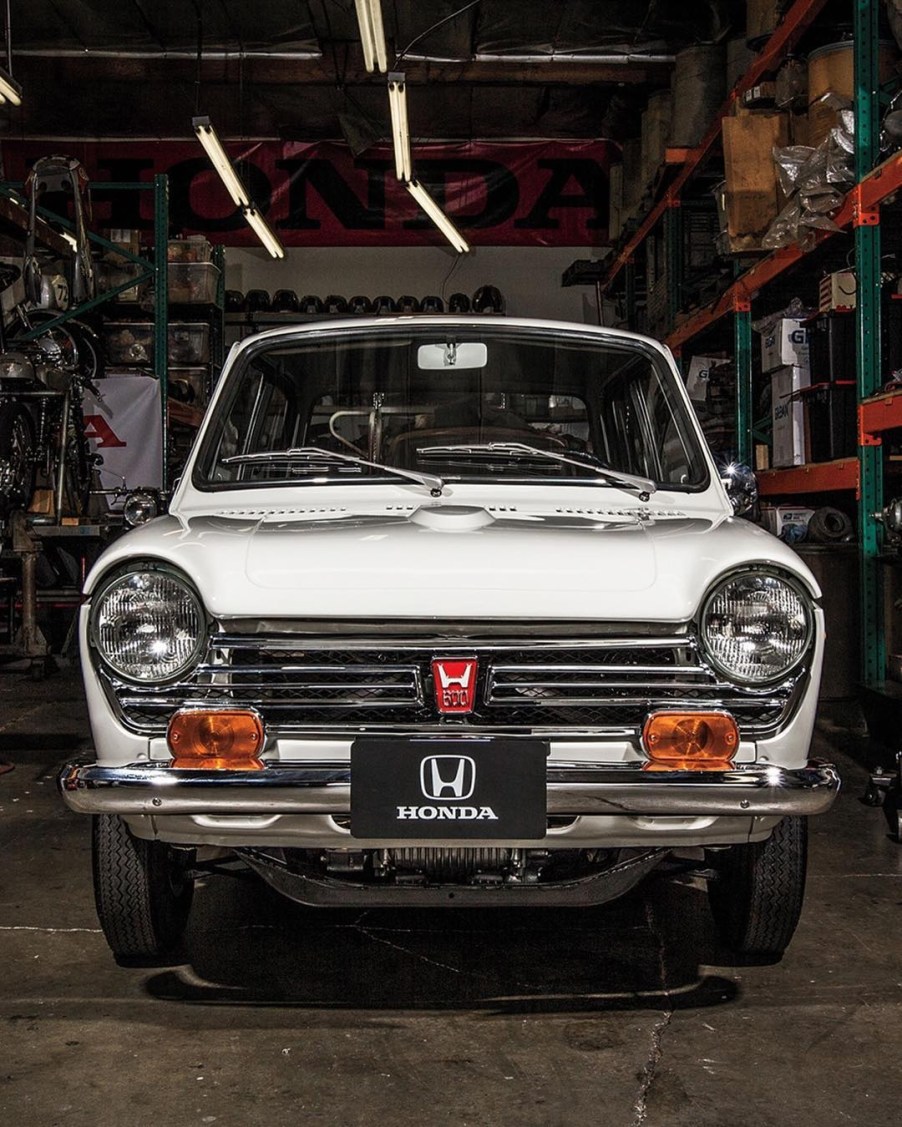
A Closer Look at the First Car Honda Ever Sold in America
Today, it’s tough to imagine that Honda would ever struggle to sell its cars in the US. It offers crossovers, fuel-efficient hybrids; the Civic lineup alone runs from sensible commuter to sports car. And, of course, there’s Honda’s extensive motorcycle lineup. But in the 60s, Honda was just starting to break into the US car market. And it did that with the 1969 Honda N600.
The N600: the first US-market Honda car

To be sure, Hagerty reports, Honda was selling motor vehicles in the US before 1969. But these were motorcycles like the original Super Cub (‘you meet the nicest people’), not cars. Although, that’s not to say Honda didn’t make cars before then.
It’s just that these were kei cars, ultra-compact and cheap vehicles meant to get Japan mobile after WWII. Think original Mini Cooper and Fiat 500, only even smaller. From 1963, Hemmings reports, Honda made the N360, a sedan powered by a 360cc twin-cylinder air-cooled engine. Like the original Beetle, the engine was chosen for its simplicity and ease of maintenance.

And Honda’s founder, Soichiro Honda, saw how popular the Beetle was becoming in the US. Seeing an opportunity to grow the company, engineers fitted 50 N360s with a larger, 600cc version of the twin-cylinder engine, Hagerty reports. These were the original Honda N600 prototypes. After gathering test data, the production version was released in 1969.

Although it was even smaller than the Beetle, the Honda N600 was in some ways more advanced. It was front-engine and front-wheel drive, for one. It had independent front suspension, and front disc brakes. 50 years later, many conventional hatchbacks, sedans, and even crossovers use a similar formula.
And 50 years later, the actual very first US-market Honda car still exists.
The very first US Honda N600 was recently restored
Over the years, the Honda N600 has served as the basis for a number of custom builds. Motorcycle engine swaps are particularly common, and considering the car’s origins, oddly appropriate. But there’s at least one example still around that’s bone-stock.
As Automobile Magazine explains, California-based Tim Mings is something of a Honda N600 expert. His shop, Merciless Mings, specializes in the tiny cars, and he’s worked on more than he can remember. And in the mid-2000s, another came into his hands via an owner he got in touch with at a swap meet. Then, sometime in 2009, he got around to working on it. And it turned out to be VIN #10000001. It was the very first Honda N600 ever exported into the US, one of the first 50 prototypes.
Over a roughly 18-month period, Mings restored that 1967 car, which Honda christened ‘Serial One.’ Being a prototype, it had a number of differences versus the production model. Its engine case and starter motor were sand-cast, not die-cast. The differential is different, as is the suspension and carburetor. Serial One also makes more power than the production Honda N600: 45 vs 36 hp.
But Honda had a good reason to drop the car’s power: Automobile reports the engine won’t really last beyond 22,000 miles. But, although the car currently resides in Honda’s Ohio headquarters, it does still run when you turn the key.
And, luckily, Honda N600s do still turn up for sale from time to time. Apart from the modified ones, you can often find them for sale for under $10k, Bring a Trailer reports. Some owners have even made them into pickup trucks, Motor1 reports.
It still influences Honda designs
Being a sort of ‘icebreaker’ into the US market, the Honda N600 was quickly superseded by the first Civic, Jalopnik reports. It didn’t help that although Honda motorcycle dealers sold the N600 at first, they weren’t required to repair or stock parts for it. And most early Honda car dealerships really only stocked and worked on the Civic.

But the N600 isn’t just an important part of Honda history: it’s still making impacts on Honda designs. The Honda e electric car draws influence from it. Although its US release is uncertain, Honda is planning on developing EVs with GM.
Follow more updates from MotorBiscuit on our Facebook page.


